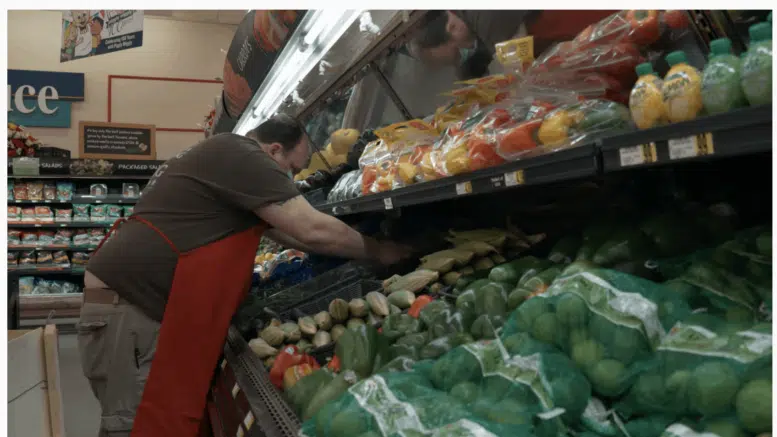By Sarah Melotte
More than 1.7 million rural Americans live in counties where there aren’t enough jobs for people who want them, making it harder for SNAP recipients to meet work requirements that were reinstated when the federal pandemic emergency declaration ended.
Able-bodied adults without dependents must work 80 hours or more per month to continue receiving benefits through the Supplemental Nutrition Assistance Program (SNAP), formerly known as food stamps. The Trump administration suspended the requirement at the start of the pandemic, and the old requirements resumed in May.
The burden of meeting the work requirement may be more challenging in rural areas, which on average have fewer jobs, greater transportation needs, and less access to broadband. The work requirement was waived during the federal pandemic emergency. But rural America still doesn’t have as many jobs as it did before Covid-19.
“We know there are a lot of people who struggle in the economy who want full-time jobs but can’t get them,” said Ellen Vollinger, SNAP director at the nonprofit Food Research & Action Center (FRAC). “It may well be an issue in rural areas where people want the full time work, but they can’t find those hours or find a full-time job.”
States can ask for area waivers from the Food and Nutrition Service (FNS) so work requirements don’t apply to areas without enough jobs. But some states restrict governors from requesting waivers.
A third of labor surplus areas are in rural counties
The United States Department of Labor maintains a list of Labor Surplus Areas (LSA), or places where there are not enough jobs for the working age population. Researchers and federal agencies can use the list for a variety of purposes, including to identify where federal funding should be emphasized.
“The reason the labor department has such a list [of LSAs] is to help guide the federal government… to invest in those persistently struggling economic areas,” Vollinger said.
But living in an LSA may be more burdensome for people who live in rural areas where fewer households have access to things like broadband internet or reliable transportation to get to job interviews, says Vollinger. The price of fuel can also be higher in rural communities where there’s not as much competition for gas stations, adding another layer of challenge for people already struggling to meet the monthly work requirements.
Time limits on SNAP
Able bodied people without dependents between the ages of 18 and 50 are eligible for three months of benefits every three years without an employment requirement. But after that 90 day period, people have to work at least 20 hours per week to continue receiving benefits.
But for the recipients who live in places with insufficient jobs, that’s easier said than done. A 2022 survey of 25,000 American adults found that the most common reason people are unemployed is because of job availability. Twenty-eight percent of survey respondents said that there were no jobs that were good fits in terms of geography, wages, or hours of employment.
East Carroll Parish, Louisiana, for example, is a rural LSA in the Mississippi Delta. In 2021, 30 percent of households were receiving SNAP benefits, compared to only 14 percent of the total rural population, according to recent estimates.
How Labor Surplus Areas Are Defined
The Department of Labor can define an Labor Surplus Area at three geographic scales. They refer to these varying scales as civil jurisdictions.
A civil jurisdiction can be a city or town of at least 25,000 residents, a county, or a balance of county, which is a county excluding a city or town within it. For example, a balance of Calhoun County, Alabama, would be the entire county of Calhoun except for the city of Anniston, which is inside it.
To qualify as a Labor Surplus Area, a civil jurisdiction must have an unemployment rate 20 percent or higher than the national average for two years. But in cases where the national rate is above 10 percent or below 6 percent, then the qualifying rate is set at either 6 percent or 10 percent. In the 2022 fiscal year, there were 278 LSAs in the contiguous United States.
Exceptions to the rule
States can apply for waivers from the federal government to eliminate the SNAP time constraints in areas with insufficient employment. Insufficient employment is a vague term, so it’s up to the discretion of the federal government and state policymakers to determine eligibility on a case by case basis.
Governors make the waiver requests, and they will often use the LSA list to justify need in certain areas of the state. The FNS can then exempt those areas from the normal constraints. That means people who live in LSAs can remain on SNAP for longer than three months regardless of whether they meet employment requirements.
But governors are not required to ask for waivers. And in some states, legislation actually prohibits them from doing so. In April of this year, Republican Governor Brad Little of Idaho signed a bill that increased the work requirement in the state from 20 to 30 hours per week.
“Many states did a good job of using area waivers,” Volling said. “But several states, mainly in the Southeast, chose not to use the area waivers.”
Mississippi prohibits work requirements waivers on the basis of job availability. Twenty-four percent of Mississippi households in a county with an LSA received SNAP benefits in 2021. Over 160,000 people live in an LSA in Mississippi, but if they are of working age and without dependents, they still have to meet work requirements to continue getting benefits.
“It’s a really harsh and arbitrary provision,” Vollinger said.








